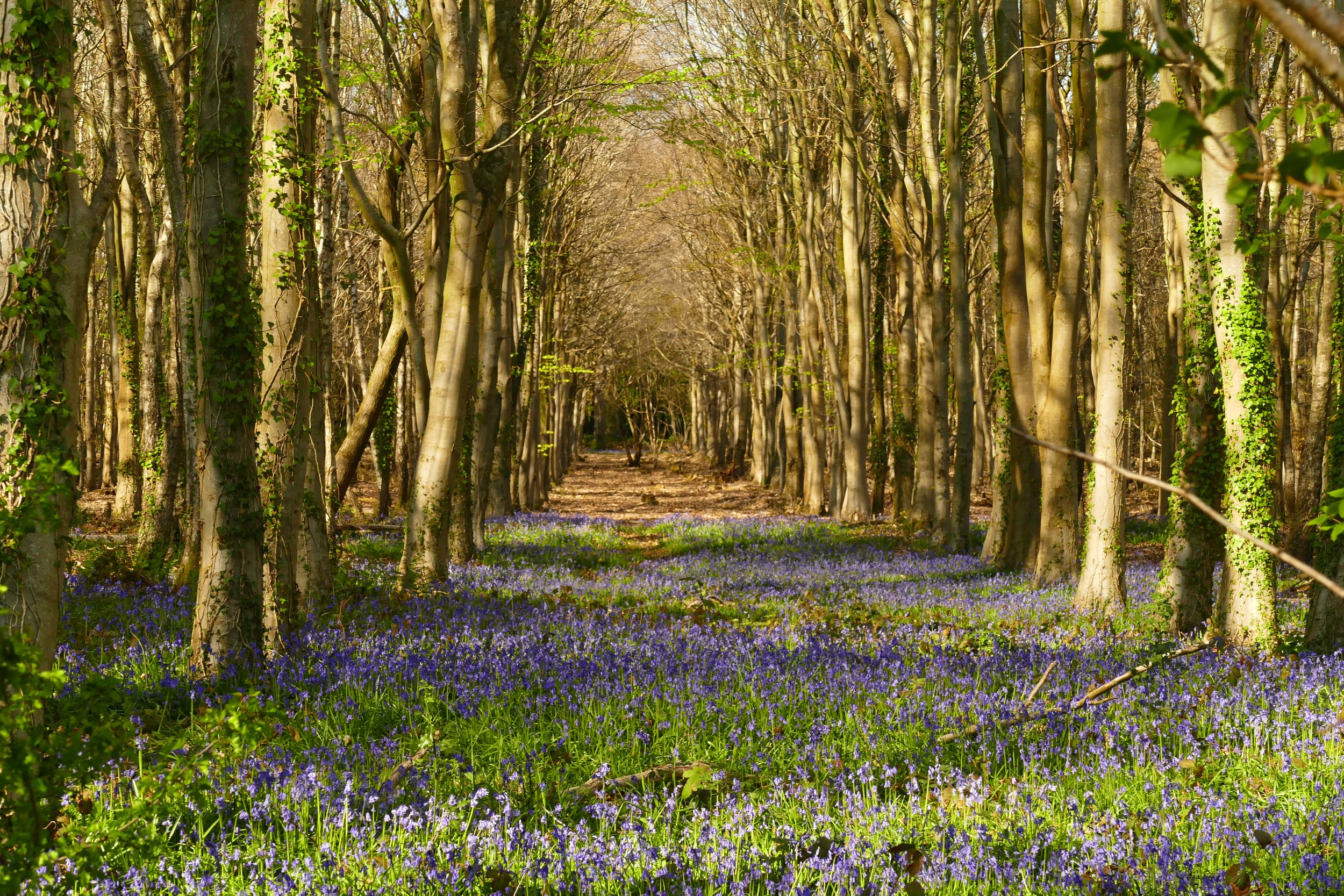Upperford Copse
On this walk, children will enjoy exploring the woodland, making shelters from branches or spotting wildflowers in Spring.
Bluebells fill Upperford Copse in spring
The Basics
Time: 25 minutes
Distance: 1.4 km
Terrain: Even and flat woodland paths
Pushchair: Yes
Dogs: Yes
Refreshments: A couple of picnic tables
Toilets: None
Public Transport: There is no public transport to this location
Parking: Large pay and display car park which you will need coins or Ringo for (Postcode: PO17 6AY - W3W: stews/moods/piled)
The copse is small and easy to find your way around
Part of The Forest of Bere, Upperford Copse is one of the best places in Hampshire to see bluebells in the Spring. This short and easy walk will circumnavigate the copse.
The Route
The small triangular copse is surrounded by roads on three sides, meaning it is hard to get lost in the woods here or lose your bearings. You could quite easily make your own route using the network of little paths. The following is the little route we take which encompasses most of the copse.
With your back to the entrance, take the first path on your left, just before the picnic table. This will head slightly downhill to the first corner. Bear right.
Continue with the road on your left and stay on the same path. You will pass an old railway bridge off in the trees to your left. (If you wanted, you could go under the bridge and link this walk to the Meon Valley Trail and walk to Wickham).
Continue, passing the railway bridge, until you come to a meeting of a few paths. The first on the right, with a blue marker, is the most direct route back to the car park.
We took the left hand path, which passed a huge branch den/shelter which my children enjoyed playing in. Soon after the den you will spy another bridge. Go right here, slightly up hill, and continue with the road to your left until you can’t ascend any further. Turn right at this point and walk with the road to your left back to the car park.
Did you know?
The bluebell's Latin name, Hyacinthoides, comes from a Greek myth: when the Prince Hyacinthus died, the tears of the god Apollo spelled the word 'alas' on the petals of the hyacinth flower that sprang up from his blood.
If you enjoyed this walk…
…try this walk at West Walk/Hundred Acre Wood which is in an adjoining woodland and has a great play area and sand pit.
We are passionate about keeping The Ambling Path as a free resource available to everyone, forever. If you have enjoyed using our walking guides, then please consider leaving us a donation. This will help to cover our costs as well as rewarding the considerable time and effort needed to maintain the site. Thank you.

























